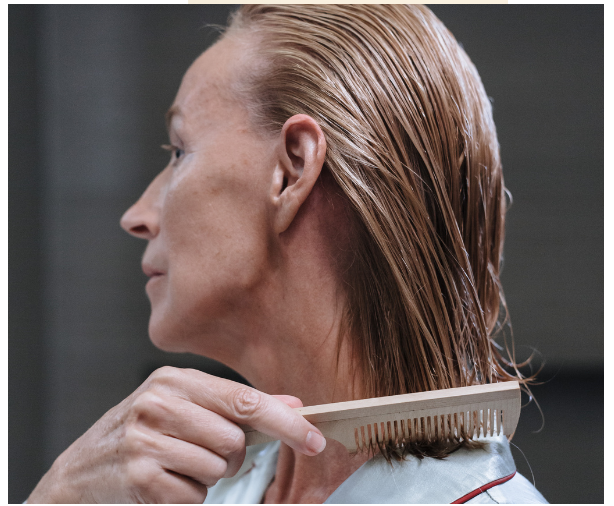By A Hair: The Untold Story Of Older Women And Hair Loss
June 29, 2022

It’s a source of embarrassment, even shame, yet apparently it’s a more common occurrence than most of us realize. While we are all familiar with older men, or even middle-aged men, becoming bald, we have deep reservations and reluctance to accept that a similar fate can happen to women as they get older. But in fact, a recent study published in the journal Menopause provides ample evidence that this is a relatively common occurrence. According to this study out of Thailand, female pattern hair loss (the gradual thinning of hair at a part line followed by increasingly diffuse hair loss radiating from the top of the head) happens to more than 50% of women over age 50. According to this study of 200 post-menopausal women, 52% had some hair thinning and 60% had low self-esteem issues as a result, with increasing distress as the severity of hair loss progressed. Hair loss was also associated with a higher body mass index. It’s thought that declining estrogen levels that accompany menopause are implicated in this hair loss. To find out more, grab your hairbrush and read here and here.
To dig a little deeper into the connection between menopause and hair loss, it’s important to understand the hormonal fluctuations that occur and how they may interact with hair growth and hair loss. During menopause, women experience a decrease in estrogen and progesterone, which sparks an increase in androgens, male hormones that are found in small amounts in women. Androgens are implicated in shrinking hair follicles, resulting in hair loss that is known as androgenic alopecia (which also occurs in men). During this process, the growing phase of hair gets shorter and fewer hairs are actively growing in, thus leading to thinning hair. In the United States, the average age for menopause is age 51, though hair loss can begin during the perimenopause phase and continue post-menopause.
There are other possible reasons for the loss of hair in women, including genetics, vitamin deficiencies, stress, thyroid problems, and scalp inflammation. For a good comprehensive overview of 11 reasons why women experience hair loss as they age, click here. In addition, environmental factors can “weather” the hair of older women, leading to hair structure damage and leaving hair less shiny, elastic, or strong, and prone to more breakages. Factors such as UV lights, humidity, and wind, along with chemicals in hair products and treatments can all decrease natural hair density and add to the problem of hair thinning. There are effective products on the market that can help women who experience thinning hair, including minoxidil, often known by its trade name of Rogaine, which can be effective in 2 out of 3 people who try it but requires everyday use in order for it to continue to work. There are also prescription medications available, though side effects may accompany these drugs. There are other remedies, including micro-needling and plasma injections, each with its own benefits, challenges, and costs. It may be an embarrassing problem but there are lots of outlets beginning to address the existence of female pattern hair loss and strategize about responses. For a good overview of where things stand regarding help, click here.







